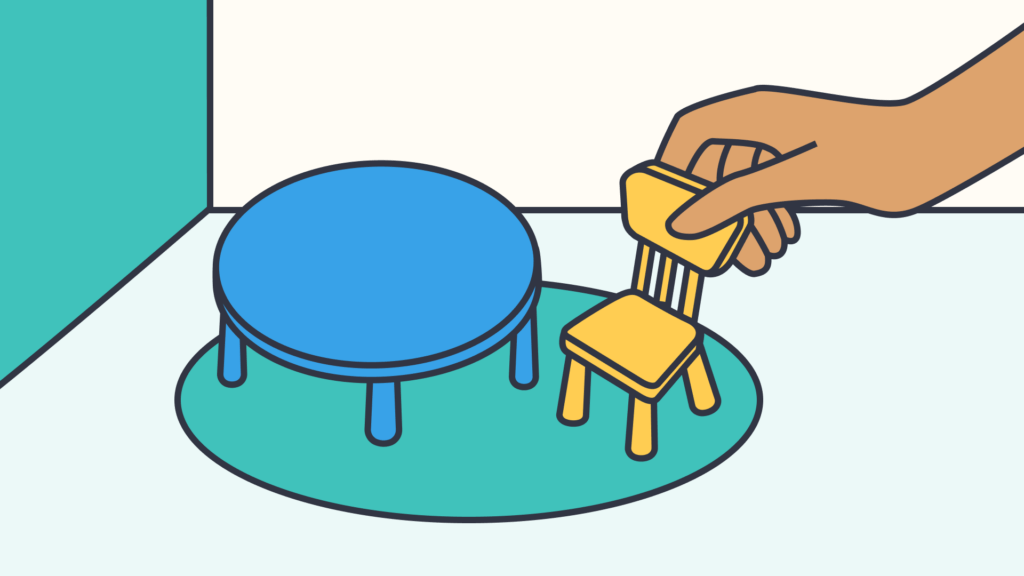How to set up learning centers in the classroom
In this guide
It’s no secret that students thrive on active engagement and independent exploration. So how can you encourage individual learning in a classroom setting that is by default, a collective? Read on to learn more about Learning Centers and all of the ways they can enhance your classroom.
What are learning centers in the classroom?
Learning centers, also called enrichment, exploratory, or skill centers, are designated areas within the classroom where students can self-direct their learning. These spaces can be temporary or permanent setups in your classroom. They are most often used in elementary settings, although they can be useful for students of all ages and skill levels!

Benefits for students
Why should you utilize learning centers in your classroom?
1) Promotes independence
By giving your students the opportunity to decide how they will engage and explore with the content at hand, you’re cultivating their autonomy and building their self-confidence.
2) Introduces life skills
It’s up to you if you want your students to work independently or in small groups at their learning centers. Either way, provide instructions for proper use and clean up. Imparting these necessary tasks – such as putting away supplies or wiping down white boards – onto your students not only helps keep your learning centers in working order, it teaches your class collective responsibility.
3) Allows for focused attention
Learning centers provide a great opportunity for you to work with any students who may need one-on-one instruction, or those who thrive in smaller group settings.
4) Provides opportunities for integrated learning
Depending on how you choose to dedicate your learning centers, they can act as a helpful space for bridging skills and content across your curriculum. For example, you may choose a general theme or concept, and then structure your learning center around it and the skills needed to explore the content further (i.e., geography and maps).
5) Allows for differentiated instruction
Learning centers allow your students to work at their own pace. Centers can be tailored to different skill levels, allowing you to meet the needs of diverse learners. Differentiation ensures your students the opportunity to focus on what they need to.
6) Promotes play and creativity
By providing a more informal space to practice skills, students that learn by doing have the opportunity to practice and play in a more creative atmosphere than traditional classroom learning provides.
7) Improves your teaching
Sending your students to work in learning centers gives you the opportunity to observe and monitor your students’ progress in a way that isn’t always possible when you’re actively teaching. This allocated time will give you the opportunity to hone in on your students’ individual needs, ensuring you’re giving all of your students the best possible learning experiences.

Types of learning centers
Skill based learning centers are structured to provide an environment for students to engage with curriculum content and practice important skills, such as reading, writing, and mathematics. Here are some common examples, and what they might look like:
Math center
An enriching center for practicing math might be stocked with numbered blocks, geometric shapes, patterns, and other manipulatives for students to practice different mathematical concepts.
Reading & literacy center
A corner stocked with leveled books and other reading materials provides students with a cozy library setting. By encouraging independent or partnered reading, this type of learning center can provide crucial practice in literacy, including reading comprehension and vocabulary development.
Writing center
A writing center stocked with pens, pencils, paper, journals, and interesting writing prompts can help students develop their writing skills while encouraging them to express themselves through the written word.
Science center
A science center could look like a collection of natural materials and magnifying glasses to study such as local rocks and leaves, or even a dedicated experiment center where students can practice cause and effect.
Social studies center
A center stocked with maps, globes, artifacts, and facsimiles of historic documents make students feel like true historians. This type of center offers practice in geography, historical thinking skills, and cultural understanding. There may also be age appropriate books about historical figures or events that connect to the curriculum.
Art center
This one can get messy! The good news is the teacher is in control of the supplies and mediums that are provided to students. We all know art is a crucial element of student expression and education, so incorporating it into class time is a no brainer.
Technology center
Based on the technology available, a tech center might have a computer or tablets where students can safely browse the web and practice their digital literacy and typing skills. This could also be a space to play educational online games or conduct research for assigned projects.

Advice for setting up learning centers
So, where should you begin on your journey to create effective learning centers? Here are the steps to get started:
Step 1: Determine student needs
How old are your students? What content are they studying? What skills do they need to practice?
These are the questions that will help you determine what type(s) of learning center is appropriate for your classroom. You might also ask yourself what types of centers make the most sense for your area of expertise, content area, and teaching style.
Step 2: Assess your space
Classrooms offer finite space. Where are you going to set up your learning center(s)? How much space will it need?
That said, how many students can use the center at once, and how will they populate it? Will they sit at a table, or on a rug? You’ll need to acquire furniture and make sure the space is physically comfortable and accessible for all of your students.
Step 3: Materials
Once you’ve identified your content and space, it’s time to start gathering enriching materials. What will be included in the center? How will you obtain these materials? Make sure to check your budget, and source from the community when possible.
Next, consider how the materials will be labeled and stored (I’m a big fan of color-coded storage bins). Bookshelves, bulletin boards, and graphic organizers are some popular inclusions.
Step 4: Decorate!
You want your learning center to be appealing to students, so make it look nice! If you’re able to, hang posters, pin instruction sheets, and display other important information prominently. Consider using bright colors and bold patterns to appeal to your students, as you might when decorating your classroom for the year.

Learning center management
Now that you’ve worked so hard to construct a visually appealing, content relevant, and physically comfortable learning center, the last thing you want is for it to end up in shambles! Your students are equally responsible for the care and management of the center.
Once your learning center is ready for use, you’ll need to teach your students how you expect them to engage with it. How do they use the materials and treat them with respect? Discuss the rules for using the center and its materials, and if possible, post the rules somewhere visible as a daily reminder.
Here’s what I suggest for imparting your expectations:
- Decide when the appropriate time is for using the center. Is it after a student finishes all of their assigned work and has free time? Do you have more than one center and plan on having the entire class rotate from one to the next during designated center time?
- Create a routine for students to get started at the center. Work handed in? Chair pushed in?
- Is there a time limit for using the learning center? When will other students get a turn? How will you signal that time is up?
- Establish how you will get the class’ attention during learning center time – you can try any of these calls and responses
- Show students all of the parts of the center, including where the materials are stored, how to engage with the materials, where the directions are written, and where they should arrange themselves for the activities
- Model the activities or work that your students will be doing
- Demonstrate how to clean up when they’re done and where the materials go to be stored away
- Practice! Give your students time to try it out, and correct any less than stellar performance. Establishing a routine is going to be crucial here – what that routine looks like depends on how you want your learning centers to serve you and your class time.
Another important thing to keep in mind is setting up your learning centers in a way that best serves your students. Here’s a handy checklist:
- Does this center honor multiple learning modalities?
- Can these activities be scaffolded for different skill levels?
- Are the materials accessible for all of my students?
- Is the content relevant to my curriculum?
- Are there a variety of activities that are relevant to my students’ interests?
References
- Burden, Paul R. “Learning Centers in the Middle School Classroom.” National Education Association, Washington, DC. 1982. https://files.eric.ed.gov/fulltext/ED223607.pdf
- Gould, Patti and Sullivan, Joyce. “The Inclusive Early Childhood Classroom: Easy Ways to Adapt Learning Centers for All Children.” Gryphon House. MD. 1999. Print.
- Moore, Nancy M. “Learning Centers: ‘Turning On’ an Elementary Classroom.” Educational Technology 14, no. 11 (1974): 24–26. http://www.jstor.org/stable/44421662.
- Nations, Jimmy E., Ed. “Learning Centers in the Classroom.” National Education Association, Washington, DC. 1976. https://files.eric.ed.gov/fulltext/ED120123.pdf
- Sackstein, Starr and Twerillinger, Karen. “Hacking Learning Centers in Grades 6-12: How to Design Small-Group Instruction to Foster Active Learning, Shared Leadership, and Student Accountability.” Hack Learning Series. 2021. Print.

Jessica Pastore
briefcase iconMuseum Educator
Jessica Pastore is a museum educator living and working in New York City. Her background is in social studies education and world history. She has taught in both classroom and gallery settings for the past ten years.
Other posts
Want more content like this?
Subscribe for blog updates, monthly video releases, trending topics, and exclusive content delivered straight to your inbox.










